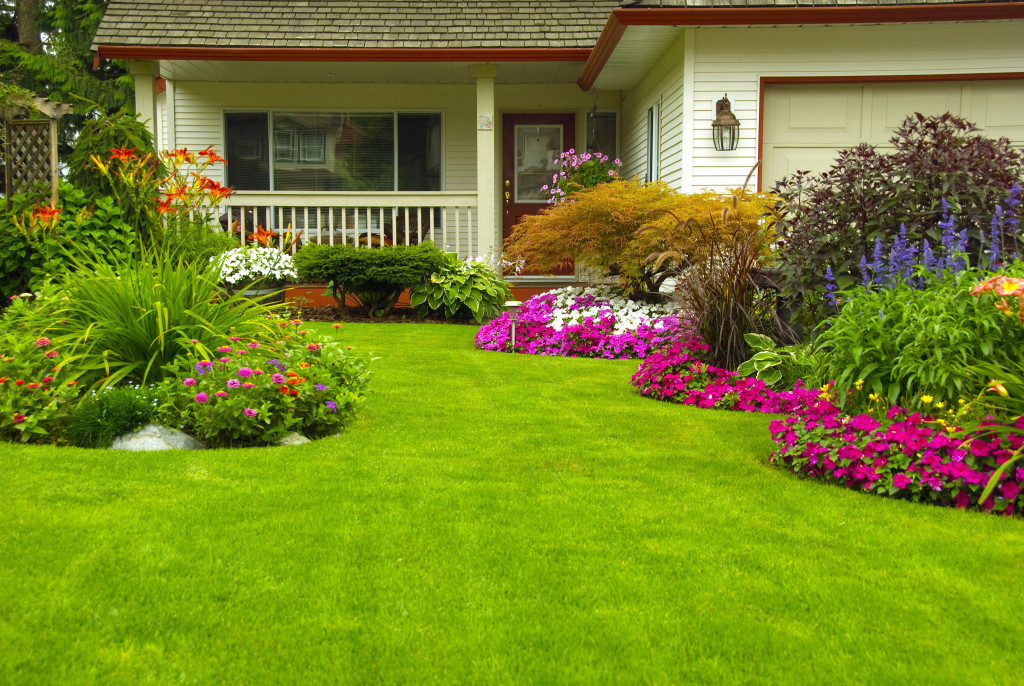Landscaping is an investment that will pay off in the long run. It can increase the value of your home, improve its appearance and boost energy efficiency. In addition, landscaping can give you a chance to enjoy the outdoors while creating a more sustainable environment for your family.
Landscaping for the future is about making smart decisions now that will benefit you in the long term. Here are some of the most important sustainable landscaping trends that you should consider as you plan your next project.
Native plants
Native plants are plants that naturally grow in an area. They are adapted to the local climate and soil conditions, which means they require less maintenance than other types of landscaping plants. Choosing to plant native plants also helps reduce water usage by up to 50%. Native plants also attract wildlife and pollinators, which can help to restore the local ecosystem. It’s essential to plant a variety of different native species so that you have an attractive landscape that will thrive for years to come.
Proper drainage and erosion control
Proper drainage and erosion control are essential for any landscape. If you don’t have good drainage in your yard, it can lead to flooding and other problems. Erosion control helps prevent soil from washing away due to heavy rains or storms. This can also help ensure that treated soil doesn’t end up in local waterways. You can reduce erosion by planting native plants with deep roots that can hold the ground together. It’s also important to keep your yard clear of debris, branches, and other materials that could cause problems during storms.
Water responsibly

Watering your lawn can be one of the most significant contributors to water waste. The average person in the U.S. uses about 100 gallons (378 liters) of water every day, most of which goes to watering lawns and gardens. While it’s important to keep your yard healthy, there are ways you can reduce your water usage without sacrificing its appearance or performance. Using indoor and outdoor irrigation timers can help you manage the amount of water you use. You can also install a rain barrel or use a composting toilet to reduce your water usage. Drip irrigation systems are another option, as they use less water to deliver the same nutrients. You can also try using water-efficient plants or mulch in your yard to prevent soil evaporation.
Skip the chemicals
Chemicals such as weed killers and pesticides can be toxic to you, your family, and the environment. They can also cause damage to nearby plants and wildlife. Because of this, many people are choosing to go organic when it comes to lawn care. Organic fertilizers can be used to improve the condition of your lawn. You can also use mulch or natural compost to help nourish the soil and prevent weeds from growing. If you do choose to use chemicals, make sure they are labeled as “weed-and-feed” or “weed control.” These products contain fertilizers, so they won’t harm nearby plants.
Use solar energy
There are now numerous solar-powered lawnmowers, lighting fixtures, and other lawn equipment available. These products are not only more environmentally friendly, but they can also save you money on your energy bill. If you have a large yard and plenty of sunlight, consider switching to solar power for some or all of your lawn care needs. If you have a small lawn, you may not need to invest in solar equipment. However, you can still make it easier for your lawn mower to run on solar power by using rechargeable batteries and plugging them into an outlet during the day when they’re fully charged.
Use permeable materials
A permeable hardscape made of pea gravel, coconut fiber, or decomposed granite can help reduce runoff by allowing rainwater to soak into the ground rather than flow off your property. A permeable hardscape also makes it easier for plants to grow and reduces the number of chemicals you need to use on your lawn. You’ll also find that a permeable hardscape is more comfortable to walk on and easier to clean.
Final Thoughts
Sustainable landscaping is an integral part of being environmentally conscious. Using sustainable landscaping techniques, you can help reduce your carbon footprint while making your yard a beautiful place to enjoy. Sustainable alternatives to traditional landscaping materials can be more expensive, but they will also last longer and save you money in the long run.
It’s important to remember that when you take action on any level, whether it’s in your yard or by supporting legislation, you’re making a difference. You can be part of the change and help make our planet greener.

